Abandoned on Everest
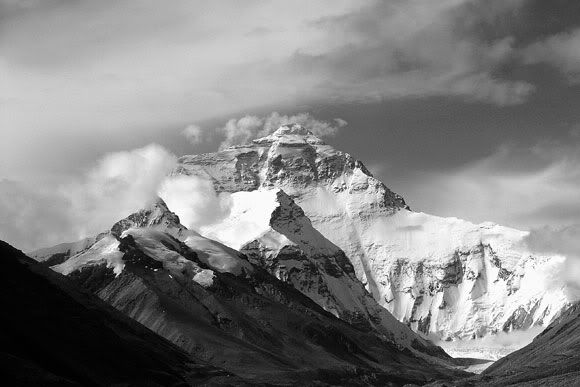
In
2006, a lone climber attempting the summit of Mount Everest for the
third time was, purely by chance, caught in an amateur photograph taken
by another climber of the scenic mountaintop ahead. The climber in the
photograph was making his way up what is known as the Final Push of the
Northeast ridge, between Camp VI at 8,230 m and the summit. It was late
in the afternoon, a foolishly reckless time to undertake the lengthy and
dangerous route.
It would be many hours before the the
photographer and his climbing team saw the man again. Leaving the camp
at the recommended time, shortly before midnight in order to reach the
summit at daybreak, they were first in line of a total of roughly 40
climbers attempting the Final Push that day. A long train of men, all
tethered to the lengths of rope permanently in place to keep climbers on
the right track.

For
decades, this rope had taken climbers within a few feet of what became
known as Green Boots cave. A small limestone overhang located at 8500 m,
it was already infamous among climbers for the same reason it earned
its nickname. For the past ten years, the body of a climber who died in
1996 has been a grim landmark for every climber of the Northeast route,
lying curled up in the fetal position, wearing fluorescent green
mountaineering boots.
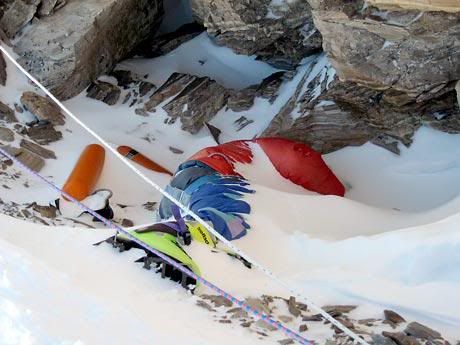
This
morning, however, Green Boots had company. Sitting no more than two
feet to the left of the corpse was a man who at first glance appeared to
be dead. His gloved hands were on his knees, his hood and hat cast his
face in shadow. The only feature visible was the man's severely
frostbitten nose, already a greenish black hue. On closer inspection,
the vapor from the man's breath could be seen rising.
What
happened next entered the folklore of the highest mountain on earth.
Every man interviewed gives a different story. What is certain is that
every single one of the 40-odd climbers attempting the summit that day
left the man in the cave, whose name was David Sharp, to freeze, either
by choice, by ignorance, or by misjudging him as a corpse they already
expected to see in that infamous cave.
While chilling in itself,
the incident pales in the bigger context of the deadliness of Mount
Everest. For every ten climbers who have ever reached the summit, the
mountain has claimed one of them. In the 56 years since the first men in
history reached the top, 216 people have died, and the grim reality of
the horrific conditions of the Final Push is that 150 bodies have never
been, and likely can never be, recovered. They are all still there, and
located, almost without exception, in the Death Zone.
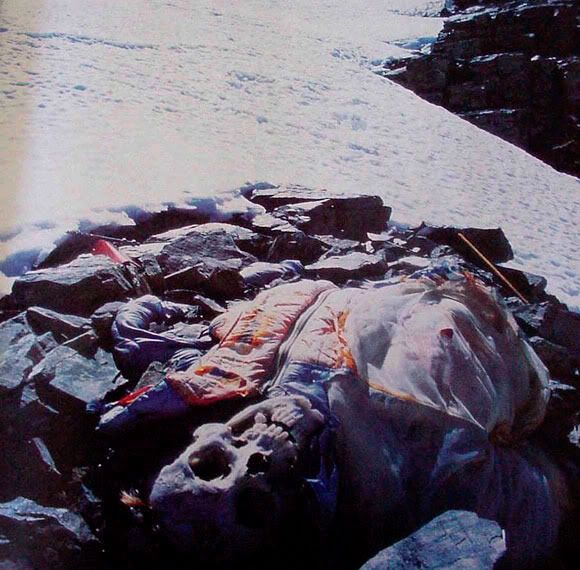
Above
a certain altitude, no human can ever acclimatize. Known as the Death
Zone, only on 14 mountains worldwide can one step beyond the 8000 meter
mark and know that no amount of training or conditioning will ever allow
you to spend more than 48 hours there. The oxygen level in the Death
Zone is only one third of the sea level value, which in simple terms
means the body will use up its store of oxygen faster than breathing can
replenish it.
In such conditions, odd things happen to human
physical and mental states. A National Geographic climber originally on
Everest to document Brian Blessed's (ultimately botched) attempt at
summiting, described the unsettling hallucinogenic effects of running
out of oxygen in the Death Zone. The insides of his tent seemed to rise
above him, taking on cathedral-like dimensions, robbing him of all
strength, clouding his judgement. Any stay in the Death Zone without
supplementary oxygen is like being slowly choked, all the while having
to perform one of the hardest physical feats imaginable.
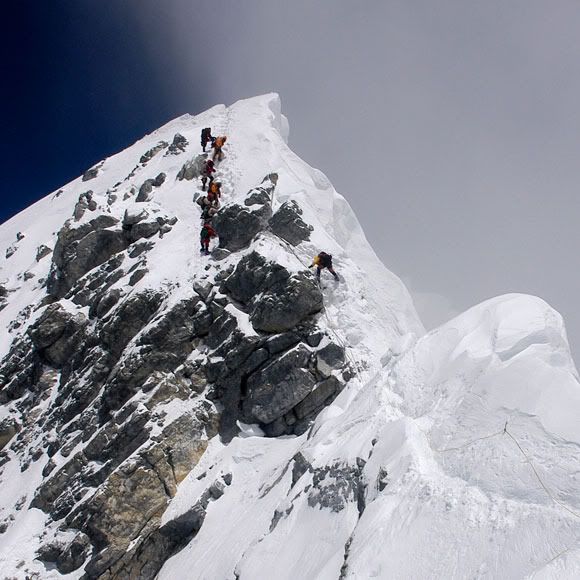
Lack
of oxygen and treacherous terrain are not the only challenges on
Everest, however. Ascents are very rarely attempted outside a very short
window between May and June when conditions are at their absolute best,
with average temperatures of -27 degrees celcius, and 50 mph winds. But
Mount Everest is so high that the top actually penetrates into the
stratosphere, where winds known as Jet Streams can flow up to 200 mph,
driving temperatures down to minus 73 degrees celcius.
Any
exposed skin at high altitudes, even at the best of conditions, are
prone to frost bite. A reaction to extreme cold, frost bite starts when
blood vessels in the skin contract to preserve core body temperature, in
conditions where normal blood flow would lead to the body cooling
dangerously fast.
Over time, if the exposed areas of skin
are not heated, the lack of blood flow causes tissue death and, even if
reheated, gangrene. At this stage, amputations are common. | 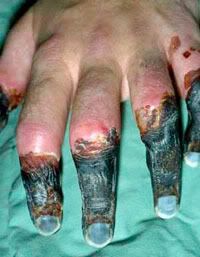 |
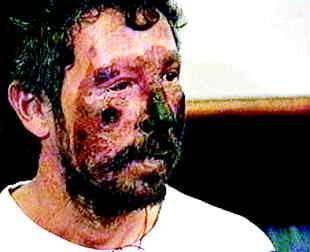 | Climbers
are by no means ignorant of these facts. They are reiterated in every
source, in every article, and somehow adds to the dangerous allure of
the mountain.
But in the words of David Brashears, five time
summiteer of Everest, "there had been nothing in my training to prepare
me to pass through the open graveyard waiting above." |
The
case of Hannelore Schmatz is an infamous one. On October 2, 1979, after
a successful summit, and for reasons unclear, she died of exhaustion
100 meters short of reaching Camp IV. For years, any climber attempting
the southern route could see her body, sitting, leaning against her
backpack with her eyes open and brown hair blowing in the wind. Despite
being so exposed and so visible along the well-trodden climbing route,
rescue operations are virtually suicidal in the Death Zone. A Nepalese
police inspector and a Sherpa who tried to recover Hannelore's body in
1984 both fell to their deaths. It was finally high winds that blew her
remains over the edge and down the Kangshung face.
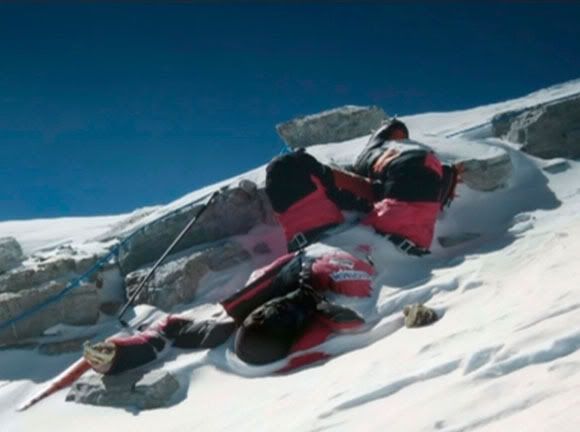
An
area along the northeast route to the summit has earned the unassuming
nickname of "Rainbow Valley", simply because of the multicolored down
jackets of the numerous corpses littering the hillside. Even in the
harsh conditions of lethal altitudes, corpses can remain for decades,
some appearing frozen in time with climbing gear intact.
Brashears
explains, "Despite the snow and ice, Everest is as dry as a desert, the
sun and wind quickly mummify human remains." The picture below serves
as an example, it shows the corpse of mountaineer George Mallory, lost
on Everest in 1924, and the state in which it was found in 1999 after 75
years exposed. | 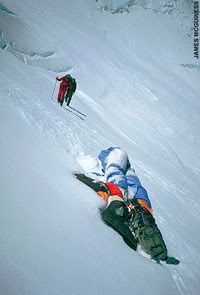 |
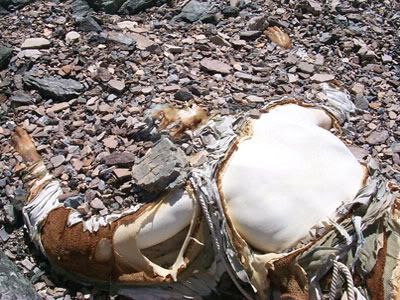
No
study has ever been done on the causes of death on Everest, what it is
that makes people sit down and give up sometimes within shouting
distance of safety. But climbers refer to a kind of confrontation with
fear that they experience at a certain point up the mountain. The
realization that, not only will you not be able to help anyone else in
trouble, but if you mess up, in any way, no one will likely be able to
help you either.
Media term it "summit fever", the apparent
callousness that drives mountaineers to disregard ethics on their
Everest ascents, sometimes literally climbing over dead bodies to reach
their goals. But whatever the preparation and outlandish cost, perhaps
it's not simply ruthless determination that makes someone abandon their
team mates, and yet still have the energy to summit. In such alien
conditions, utterly hostile to human life, climbers might face their own
mortality. Under the spectre of pure, unadulterated fear, they must
realize that they are beyond help as well as beyond helping anyone else.
If they don't, they fall among those who never leave, abandoned on Everest.
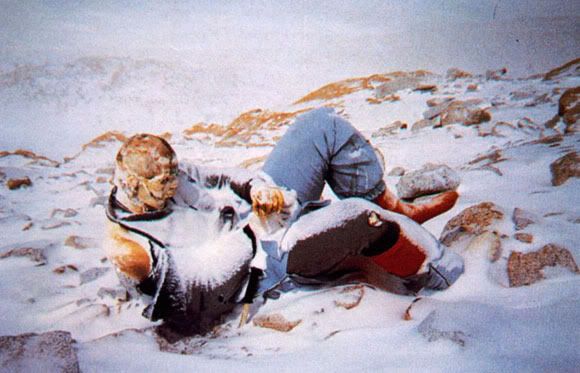
Online Documentaries:
Dark Side of Everest:
http://www.youtube.com/watch?v=HQJQapyHAQg
Dying For Everest:
http://www.documentary-film.net/search/watch.php?&ref=132
































